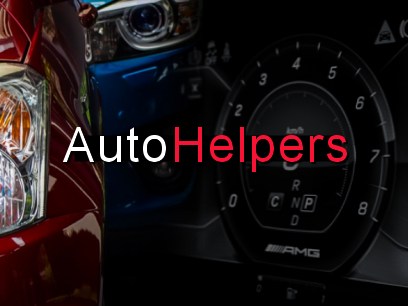Types
Brands
- Acura
- Alfa Romeo
- Alligator
- Apollo Automobil
- Aprilia
- Arch
- Arctic Cat
- Aston Martin
- Audi
- Bentley
- BMW
- Bollinger
- Boss Hoss
- Buell
- Bugatti
- Buick
- Cadillac
- CanAm
- Caterham
- Chevrolet
- Chrysler
- Citroen
- Cleveland CycleWerks
- Curtiss
- Dacia
- Dodge
- Ducati
- Ferrari
- Fiat
- Fisker
- Ford
- General Motors
- Genesis
- GMC
- Harley Davidson
- Honda
- Husqvarna
- Hyundai
- Indian
- Infiniti
- Jaguar
- Janus
- Jeep
- Karma
- Kawasaki
- Kia
- Koenigsegg
- KTM
- Lamborghini
- Land Rover
- Lexus
- Lightning
- Lincoln
- Lordstown
- Lotus
- Lucid Motors
- Maserati
- Mazda
- McLaren
- Mercedes
- Mercury
- MG
- Mini Cooper
- Mitsubishi
- Moto Guzzi
- MTT
- Nikola
- NIO
- Nissan
- Pagani
- Peugeot
- Piaggio
- Polaris
- Polestar
- Pontiac
- Porsche
- Ram
- Renault
- Rimac
- Rivian
- Rokon
- RollsRoyce
- Royal Enfield
- Saab
- Saturn
- Scion
- SEAT
- Ski-Doo
- Skoda
- Smart
- Spyker
- Subaru
- Suzuki
- Tesla
- Toyota
- Triumph
- Vauxhall
- Vespa
- Volkswagen
- Volvo
- Yamaha
- Z Electric Vehicle
- Zero Motorcycles
Article Categories
- Acura News
- Alfa Romeo News
- Aston Martin News
- Audi News
- Bentley News
- BMW News
- Buick News
- Cadillac News
- Car News
- Chevrolet News
- Chrysler News
- Dodge News
- Fiat News
- Ford News
- GMC News
- Honda News
- Hyundai News
- Infiniti News
- Jaguar News
- Jeep News
- Kia News
- Lexus News
- Lincoln News
- Mazda News
- Mercedes News
- Nissan News
- Porsche News
- Subaru News
- Tesla News
- Tips and Tricks
- Toyota News
- Volkswagen News
- Volvo News
More Articles

Curtiss Repair
Curtiss Motorcycles, previously Confederate Motors, is an American manufacturer of exotic street motorcycles in Birmingham, Alabama. It was founded in 1991 by trial lawyer H. Matthew Chambers, as an initiative seeking "enlightened design through true American inspiration."
Motorcycle Repair
Check for Blown Fuses
Just like a car or truck, motorcycles have fuses, and they can blow the same as in any other vehicle. Keeping a fuse kit on hand is helpful so you can replace any blown fuses with one that has the same amperage.
If fuses continue to blow after you replace them, you likely have a more serious electrical issue somewhere in the bike’s wiring.
Confirm There’s Gas in the Tank
A basic pre-trip check is seeing whether you have gas in the tank, but it’s something riders tend to overlook. Especially if your gas gauge reports a full tank, you might not think to check. Keep in mind that gauges can malfunction, so consider jostling your bike and listening for the slosh of gas in the tank before jumping to other potential problems.
If you can confirm there’s gasoline in your bike, see if the fuel pump is operational (if the motorcycle has one), and if there’s a carburetor, see if there’s gas making its way there, too.
Determine if the Petcock is Clogged
One potential issue that might be keeping your motorcycle from starting up is a clogged petcock. The petcock is a fuel control valve. It controls the gas flow between off, on, and reserve settings. Clogged petcocks are a common issue that riders often bring up in forums.
A minuscule screen helps keep gunk out of the petcock, but corrosion and bits of stray material can cause flow issues. Rattling the petcock a bit can help dislodge any blockages, but replacement or a deep cleaning might be necessary to get your bike running again.
Set the Choke Properly
For carbureted motorcycles, you might need to set your choke or mixture enricher to match the ambient/engine temperature. Another common oversight, this issue can crop up in extreme weather conditions, or when conditions take a sudden turn you haven’t accounted for.
Engage the Clutch
It’s usually a no-brainer for experienced riders, but for newbies, remembering to engage the clutch can mean the difference between a relaxing ride and a frustrating trip to the shop. Many bikes must have the clutch in before they will start—even when you’re in neutral.
There’s also the possibility that your bike’s clutch switch has been damaged, and you can try “pumping” the clutch a few times to see if that helps reset it. You can get around the clutch switch, but long term, you’ll need another solution (and probably a clutch replacement).
Look for Loose Wires
Another seeming no-brainer is checking electrical connectors to see that everything is plugged in. Electrical issues often escape riders because they aren’t always visible, but manually checking the connectors can help you spot a problem that wouldn’t otherwise reveal itself.
If you suspect something other than the battery is the culprit, especially if you’ve just swapped the battery for a new one, it’s also worth looking at your battery connector cables. It’s possible your new battery’s wiring is incorrect, making your non-start a quick fix once you tighten the cables to the terminals.
SOURCE: https://www.nadaguides.com/Motorcycles/shopping-guides/motorcycle-won't-start-but-battery-is-good

